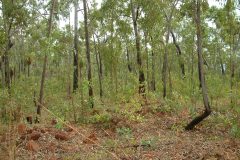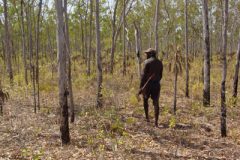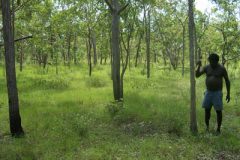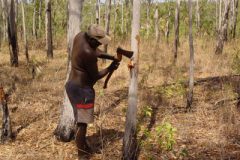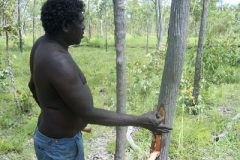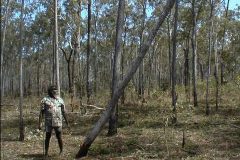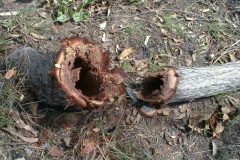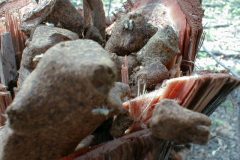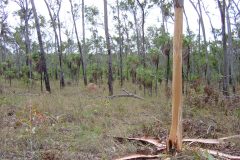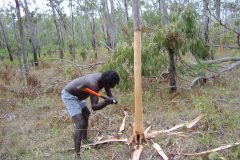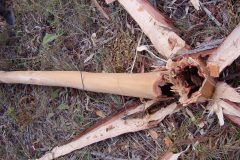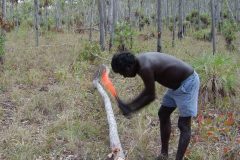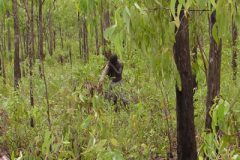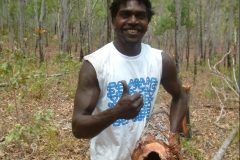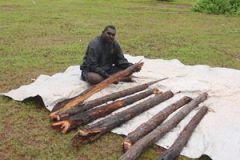
How Is a Yiḏaki Made?
While didjeridus can be made from many materials in many ways, yiḏaki are usually made from trunks of living eucalyptus trees, although very rarely, a suitable branch may be found. The trees are hollowed out by termites commonly known as “white ants.” In Yolŋu country, Gaḏayka, or Stringybark (Eucalyptus tetradonta), is used most of the time, but sometimes Guŋurru’, Darwin Woollybutt (Eucalyptus miniata) or one of two bloodwoods, Baḏawili (Corymbia ferruginea) and Dhumulu’ (Corymbia polycarpa) are also used.
The selection of the right tree is probably the finest art of yiḏaki making. It is not as easy to find a good yiḏaki as you might expect. There are many factors involved that only those who have worked on yiḏaki for many years come to understand. While many people debate the pros and cons of different types of instruments made with different methods around the world, it is sure that there is no didjeridu quite like one provided by nature.
A craftsman will go to a good section of forest, often rocky ground, and walk through the forest following his instincts and using his well-trained eye to identify suitable trees to test. Some craftsmen like Djalu’ Gurruwiwi will first listen for the resonance of a hollow tree after hitting it with the blunt end of an axe. Most will peel away a section of the bark and flick the wood with their fingernails to listen for the hollow. If it sounds good down low and up high – hollow but not too hollow – then the craftsman will begin chopping. There will be a few more checks after the chopping begins, to make sure the bottom is as hollow as expected before felling the tree.
If all is well after the initial tests, the hollow tree is felled and further worked to completion by stripping the bark, carving the wood from the outside and clearing out the inside as necessary. These days modern tools, glues and even tape are also used. Sometimes the log is left in the sun or soaked in water for anywhere from a night to a month to cure the wood before working. On extremely rare occasions, the living hollow tree was filled with rainwater, and thus the wood is already cured!
